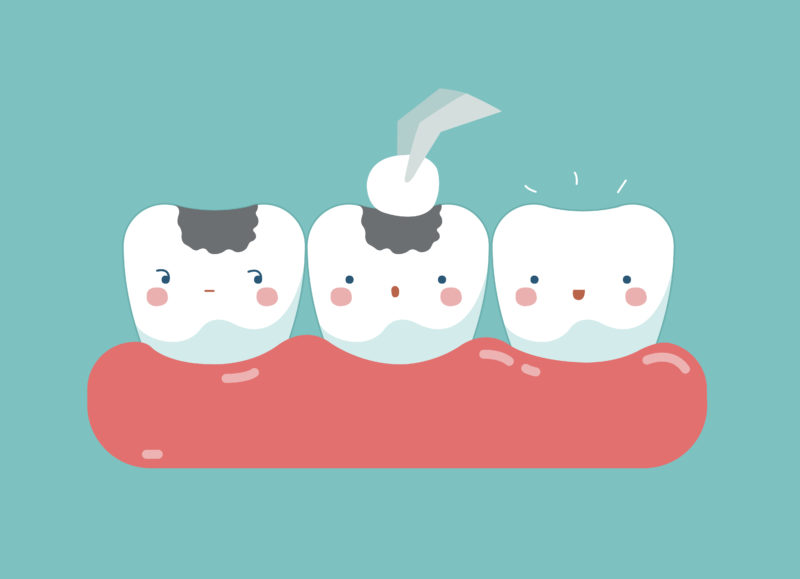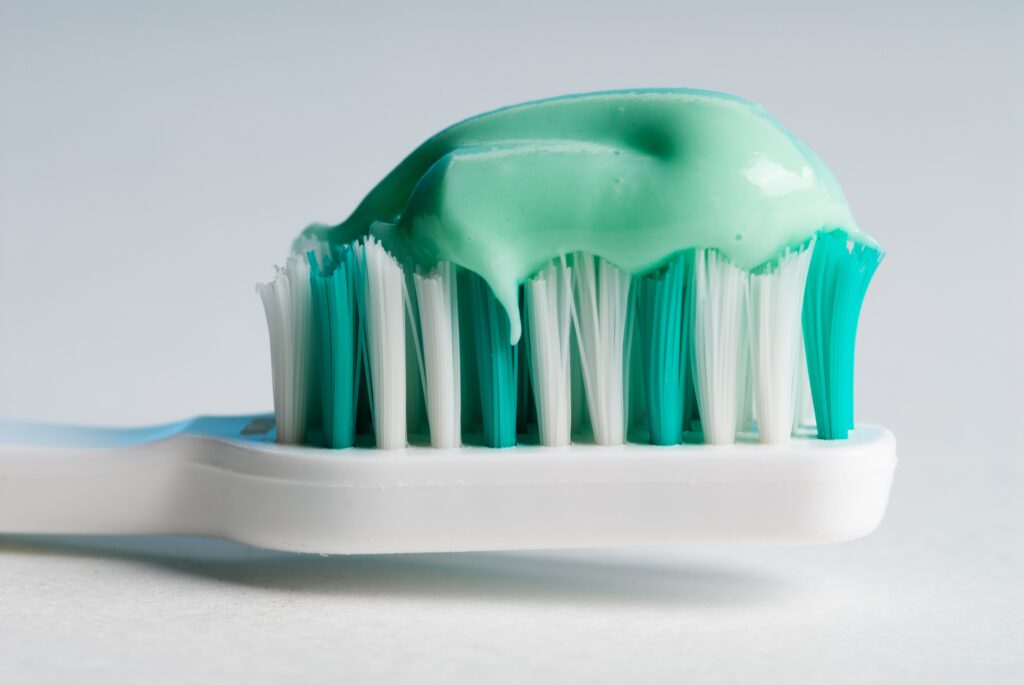Tooth fillings are one of the most common dental treatments patients receive at the dental office, which is not too surprising when you understand dental caries (or cavities) are among the most common chronic diseases in the United States.
“Approximately 91% of US adults aged 20-64 had dental caries in permanent teeth in 2011-2012. Dental caries among adults aged 35-64 was higher compared with adults aged 20-34.”
– According to the Centers for Disease Control and Prevention
When Will a Dentist Recommend a Tooth Filling?
A tooth filling is recommended when a cavity (or decaying tooth) is detected at a dental visit using dental x-rays. Fillings can also be used to repair cracked or broken teeth.
But herein lies the controversy.
If you have visited multiple dentists throughout your life, you may have noticed some are quicker to recommend tooth fillings than others. It can create a frustrating and costly dental experience at times.
Say you have gone your whole life without a tooth filling and a new dentist suddenly recommends you get one; you may need to pause and consider getting a second opinion.
“Ironically, the sealants I’d gotten when I was a child to prevent cavities had now been part of causing them as an adult. As they aged and sprang micro-leaks, they trapped bacteria under the surface.”
– Becky D.
It’s a tricky balance of remaining cautious with what dental work is recommended to you and remaining diligent to protect your dental and overall health. You don’t want to end up needing a root canal later on when a tooth filling would have been sufficient earlier.
Odds are you will need a tooth filling at some point in your life—considering the statistics of dental caries above—and this might just be it. But if a dentist is recommending several fillings all at once, that particular dentist may not be out to get you but may lean more on the preventative side and want to treat microcavities instead of waiting for the actual cavity to develop.
Our Recommendation
Remember that some dentists may be quick to recommend fillings and others may not. If a dentist recommends you come back in six months rather than a year, they may be concerned about a tooth but not quite ready to perform a tooth filling on that given tooth just yet.
“I’ve had this happen, too. A dentist once told me to just watch a tooth for a few months, and by the time I got my next check-up, the cavity was so deep I almost had to get a crown!”
– Becky D.
For the overzealous dentists, ask them questions about their recommendation for a tooth filling and consider getting a second opinion if necessary. For the cautionary dentist, heed their advice to come in for an additional dental visit that year to make sure your microcavity doesn’t grow into something worse.
What Materials Are Used for Tooth Fillings?
There are two common materials dentists use for fillings:
- Amalgam (silver filling). Silver fillings are less common in today’s dentistry but can last a long time (often 10-15 years).
- Resin-Based Composite (white filling). White fillings are most common in today’s dentistry because they are more aesthetically pleasing and chemically bond to the tooth structure. However, white fillings may not last as long as silver fillings and are slightly more expensive.
How Much Do Tooth Fillings Cost?
Prices vary for tooth fillings based on a number of factors:
- The type of material used (Amalgam or Resin)
- The number of fillings needed (how many teeth?)
- The number of surfaces that need filled (5 surfaces of a tooth)
- The location of the tooth (front/anterior or back/posterior)
| Average Cost of Tooth Fillings | ||
|---|---|---|
| Filling Type | Cost w/o Dental Insurance |
Cost w/ 1Dental Savings Plan *Avg. of Texas, Florida, California & New York |
|
Silver (Amalgam) Filling – 1 Surface
ADA Code 2140 |
$201 | $55 |
|
Silver (Amalgam) Filling – 2 Surfaces
ADA Code 2150 |
$253 | $71 |
|
Silver (Amalgam) Filling – 3 Surfaces
ADA Code 2160 |
$308 | $84 |
|
Silver (Amalgam) Filling – 4 Surfaces
ADA Code 2161 |
$364 | $103 |
|
White (Resin) Filling – 1 Surface, Front Tooth
ADA Code 2330 |
$230 | $69 |
|
White (Resin) Filling – 2 Surfaces, Front Tooth
ADA Code 2331 |
$278 | $84 |
|
White (Resin) Filling – 3 Surfaces, Front Tooth
ADA Code 2332 |
$341 | $107 |
|
White (Resin) Filling – 4 Surfaces, Front Tooth
ADA Code 2335 |
$426 | $135 |
|
White (Resin) Filling – 2 Surfaces, Back Tooth
ADA Code 2392 |
$318 | $123 |
|
White (Resin) Filling – 3 Surfaces, Back Tooth
ADA Code 2393 |
$393 | $157 |
|
White (Resin) Filling – 4 Surfaces, Back Tooth
ADA Code 2394 |
$461 | $181 |
What Questions Should I Ask My Dentist About Getting a Tooth Filling?
- Is this tooth filling completely necessary or would we be able to wait until my next visit to consider filling it?
- Do you typically fill cavities with “white fillings” or “silver fillings”?
- How long will the filling take?
Teeth toward the front of the mouth aren’t as large as back teeth, so there is often less work needed for front teeth. - How many surfaces on the tooth will the filling need to cover?
Surfaces = sides of the tooth. For example, a back tooth has 5 surfaces: the 4 sides and the top of the tooth. The more surfaces a filling touches, the larger and more expensive it is. - If multiple fillings are needed, can those be broken up over several dental appointments?
- What type of anesthesia will be required?
Dentists can use local anesthesia or nitrous oxide (“laughing gas”), depending on the size of the filling and its location within the mouth. - How long do you think I’ll be “numbed up” from the anesthesia after you are done with the procedure?
- Based on the condition of the tooth/teeth, do you think the filling(s) might need to be redone at some point in the future?








You don’t mention gold fillings. Do you recommend them? All mine are gold.
That is a great question, Winona! We may update this post at some point to mention gold fillings. At present, gold fillings are pretty rare – much less common than white and amalgam. They usually have to be recommended by certain dentists who specialize in that kind of work, as many dentists do not perform gold fillings. Gold fillings can definitely be helpful in certain situations, particularly for people who have had the other materials fall out and are trying to avoid having to get a crown. We seem to be hearing about them more and more. I’d be curious to hear what your experience has been with them and how you have found them to be helpful.
Thanks. Very informative & accurate. Just had a dental visit and. I have a silver filling that is 15 years or more old that is breaking up & know, the dentist recommends, I get a crown. Your information has really helped. I am going to ask for the white filling, regardless of cost.